How Far Is 300 Feet? 15+ Things That Are 300 Feet Long
Did you know that 300 feet is the length of a football field, yet it can also represent the height of some impressive structures? We will explore the fascinating world of things that are 300 feet long, from iconic landmarks to natural wonders.
How Long Is 300 Feet?
To visualize how far is 300 feet, consider that it’s equivalent to about 91.44 meters or just under 0.1 kilometers. Picture a football field: 300 feet reaches nearly to the 83-yard line, emphasizing just how significant that distance can be on the gridiron. It’s fascinating to think that this stretch could represent a strategic play in a game, where every inch counts.

Now, if you’re at an airport, imagine three Boeing 737 aircraft parked nose to tail. That’s 300 feet of sleek metal and engineering marvels lined up in unison. Each plane typically measures around 130 feet in length, so when you line them up, you create a striking visual of scale and distance.
How Tall is 300 Feet in Stories?
When considering how high is 300 feet, it’s fascinating to note that this height typically translates to around 20 to 30 stories in a building. While not reaching the soaring heights of skyscrapers, which often exceed 1,000 feet, a 300-foot structure still commands attention on the urban skyline.
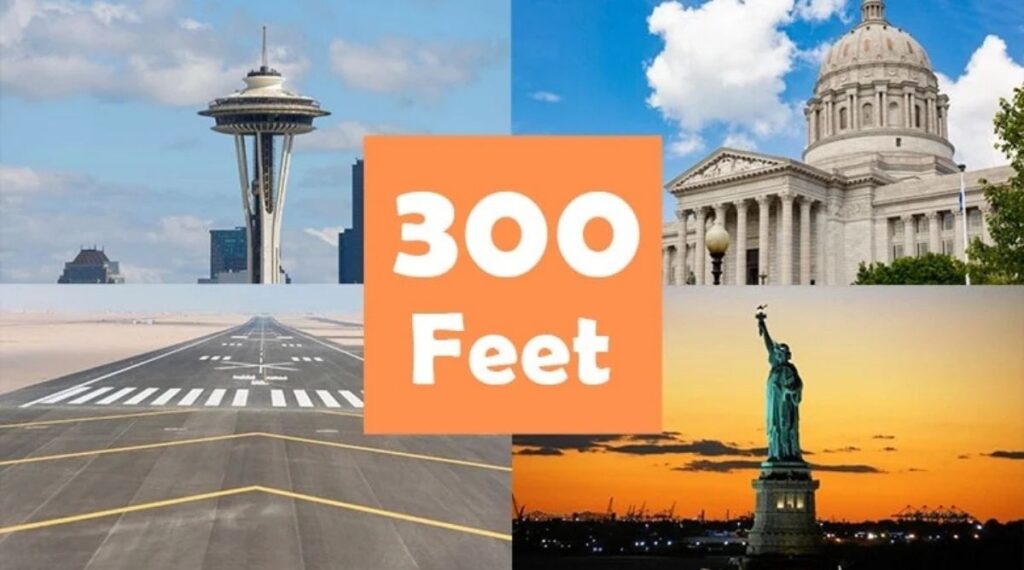
The significance of a 300 ft building goes beyond just height; it serves as a bridge between human scale and architectural ambition. These mid-rise structures often incorporate mixed-use spaces, fostering community interaction and enhancing the urban experience.
This mid-rise category offers a unique vantage point, allowing inhabitants and visitors alike to appreciate the layout of the city from above, revealing hidden patterns and relationships between buildings and green spaces.
List of Common Things That Are 300 Feet Long
- Three Blue Whales End-to-End
- Statue of Liberty
- Football Field
- New York World Building
- Seven-tenths as tall as The Great Pyramid of Giza
- The Width of 2 Airport Runways
- Missouri State Capitol Width
- Heckscher Building
- 3/5 as Tall as the Spring Temple Buddha
- Two Airbus A380 Wingspans
- The USS Enterprise Aircraft Carrier’s Flight Deck Width
- Half the Height of the Space Needle
- The Height of Niagara Falls
- Big Ben
- The Gateway Arch Width
Three Blue Whales End-to-End
Imagine a breathtaking spectacle beneath the waves: three blue whales, each stretching an impressive 100 feet in length, swimming gracefully in unison. When placed end to end, they create a stunning 300-foot line.

These majestic creatures are not just the largest animals ever known to exist on Earth; they are also marvels of evolution, expertly adapted to traverse immense distances with incredible efficiency.
In mere moments, these gentle giants can cover our 300-foot distance with just a few powerful strokes of their colossal tails, showcasing their remarkable strength and agility.
As you ponder how long is 300 ft in the context of nature’s giants, consider the breathtaking reality: in the vastness of the ocean, this measurement is dwarfed by the scale and grace of blue whales, reminding us of the extraordinary wonders that lie beneath the surface.
Statue of Liberty
Standing at an impressive 305 feet, the Statue of Liberty is not just a monument; it’s a colossal emblem of freedom and hope that captures the imagination of all who approach it. When viewed from a distance, this iconic figure seems even larger than life, towering majestically over the waters of New York Harbor.
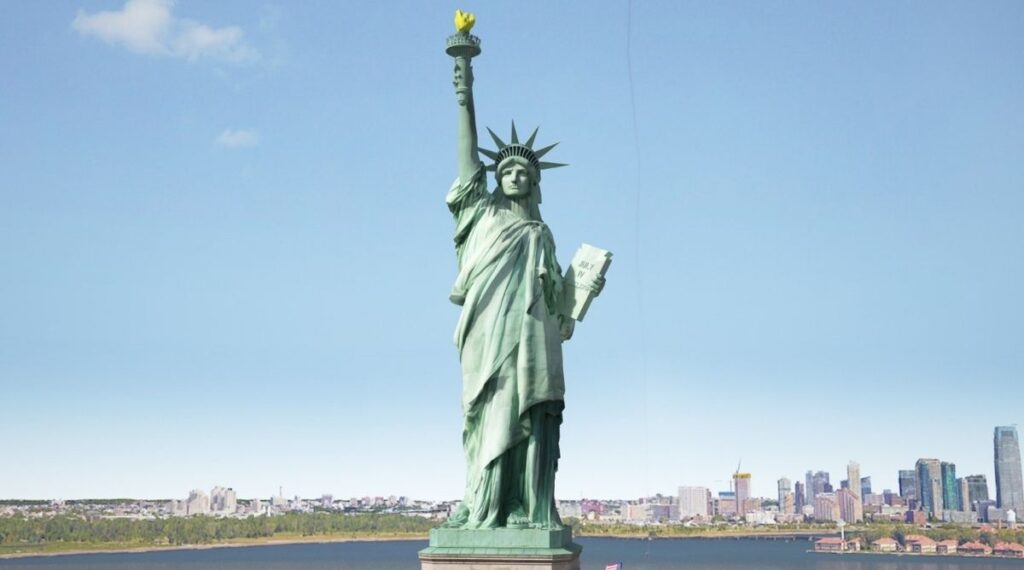
The pedestal and the torch serve as powerful symbols, representing enlightenment and the pursuit of liberty, resonating deeply with visitors from around the globe. As you draw closer, the statue transforms into a significant visual landmark, its intricate details becoming more apparent against the backdrop of the skyline.
When viewed against the backdrop of the New York skyline, the statue can appear even larger than her already impressive stature of 300 feet visualized. Each detail, from her flowing robes to the intricate designs of her crown, reflects not only artistry but also the ideals of democracy and liberty that she embodies.
Football Field
A football field, measuring 100 yards or 300 feet, offers a tangible reference point for understanding distances in sports and everyday life. Imagine standing at one end of the field and looking toward the other; the sheer length stretches before you, an expanse that can be daunting yet exhilarating.

This visual can help you grasp how long 300 ft really is, making it a powerful tool for appreciating not just the game of football but also the spatial dynamics of our environments.
New York World Building
Standing at an impressive 309 feet, the Pulitzer Building not only reshaped New York’s skyline but also marked a pivotal moment in architectural history. Completed in 1889, it was the first structure to eclipse the soaring spire of Trinity Church, a feat that symbolized the city’s relentless ambition and growth.
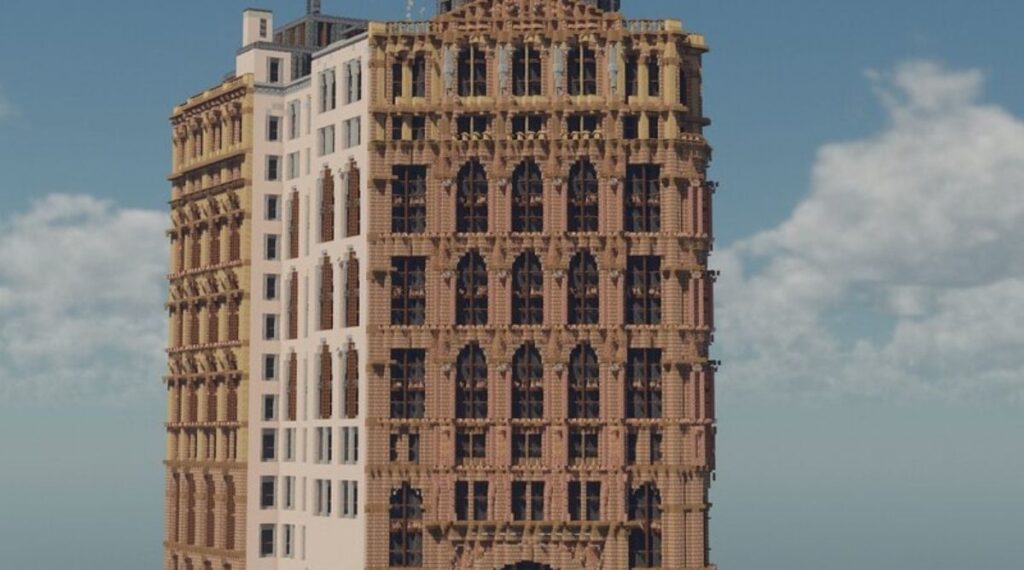
Imagine the visual impact of this towering edifice against the backdrop of a burgeoning metropolis; it redefined what 300 feet looked like in the context of urban architecture, pushing boundaries and inspiring future generations of architects to aim higher.
The Pulitzer Building was important for more than just its height. It provided a key entrance for cars to the Brooklyn Bridge, helping traffic move between Manhattan and Brooklyn. This spot represented the blend of business and culture that defined late 19th-century New York.
Although it was torn down in 1955, the building still symbolizes a changing time, showing us that even if buildings disappear, their influence lives on and inspires people to aim high.
Seven-tenths as tall as The Great Pyramid of Giza
At a towering height of 430 feet, the Great Pyramid of Giza has long captivated the imagination, standing as a testament to ancient engineering and human ambition. The experience of witnessing the Great Pyramid in person is transformative.

While many things that are 300 feet tall can evoke awe, none can quite match the overwhelming presence of a structure that has stood for over 4,000 years.
The structures that are 300 feet tall, such as the iconic Statue of Liberty or the impressive Washington Monument, they seem monumental in their own right. Yet, when juxtaposed against the majesty of the Great Pyramid, they serve to remind us just how astonishingly grand the pyramid is, towering above at seven-tenths of its full scale.
The Width of 2 Airport Runways
When contemplating the width of two airport runways, which spans approximately 300 feet, one can grasp the enormity of this expanse. Just how far is 300 ft? Imagine it as the length of a football field stretched across, creating a safe haven for large aircraft during takeoff and landing.
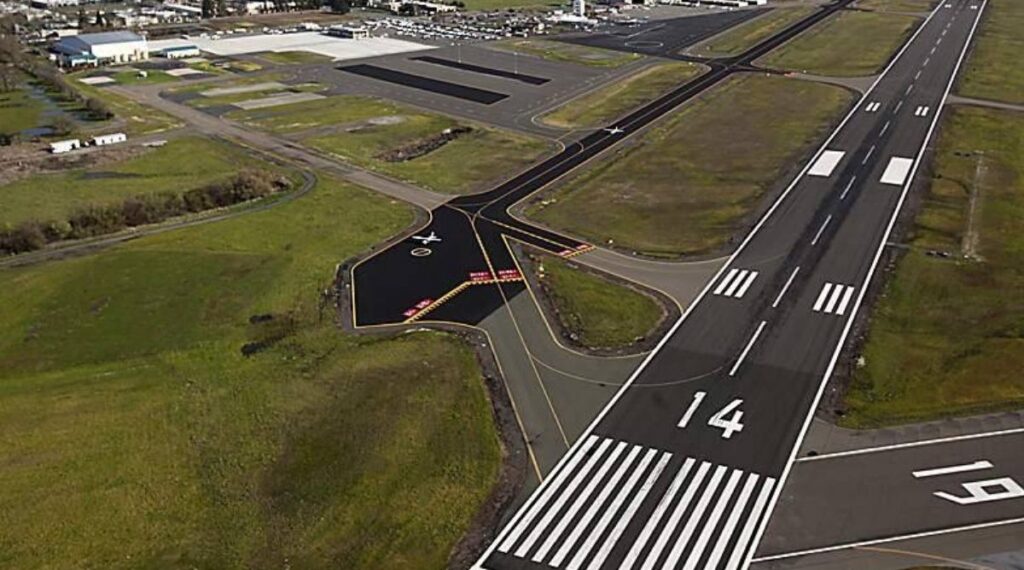
This vast space is not merely a luxury; it serves a critical function in aviation safety, allowing ample room for emergency maneuvers. Should a large plane face engine failure or inclement weather, having 300 feet to maneuver can mean the difference between a successful landing and a catastrophic event.
Missouri State Capitol Width
The Missouri State Capitol stands as a monumental testament to architectural grandeur, dominating the Jefferson City skyline with its impressive dimensions.

Stretching approximately 300 feet wide at its center and extending 437 feet in length, this imposing structure not only houses the state’s legislative bodies but also serves as a symbol of Missouri’s governance.
To put that into perspective, how far is 300 ft? Imagine nearly the length of a football field, a distance that evokes a sense of scale and significance, perfectly encapsulated by the Capitol’s robust façade.
Perched upon a limestone bluff on the south bank of the Missouri River, the Capitol’s design harmonizes with its natural surroundings while asserting its dominance over the landscape.
The dome, soaring to a height of 262 feet above the basement floor, invites visitors to look up in awe, reflecting both the aspirations of the state and the artistry of its creators.
Heckscher Building
The Heckscher Building, now known as the Crown Building, stands as a testament to New York City’s architectural evolution since its construction in 1917.

Rising 317 feet over the bustling streets of Midtown Manhattan, this 27-story marvel is not just an impressive height; it represents a pivotal moment in the city’s skyline transformation.
To put its size into perspective, how big is 300 feet? Imagine standing beneath the towering structure, craning your neck to appreciate the intricate details of its Beaux-Arts design that have withstood the test of time.
In 1983, the building underwent a significant rebranding, adopting the name Crown Building, which aptly reflects its illuminated presence against the night sky. The striking illumination highlights its grandeur and serves as a beacon for both locals and visitors alike.
3/5 as Tall as the Spring Temple Buddha
Standing at a staggering 502 feet, the Spring Temple Buddha in China commands attention not just for its height but for the sheer scale of its significance. When you consider that 300 feet tall is only three-fifths of this monumental statue, it becomes clear just how extraordinary this structure truly is.

To put it into perspective, how tall is 300 feet compared to other landmarks? Imagine a 30-story building towering above you, its grandeur encapsulating the essence of spiritual devotion and artistic achievement.
While many skyscrapers and towers reach impressive heights, few can evoke the same sense of reverence as the Spring Temple Buddha. Each inch of its height tells a story of cultural heritage and the enduring quest for enlightenment.
Two Airbus A380 Wingspans
When you think of things that are 300 feet long, the Airbus A380’s impressive wingspan of 261.8 feet may not immediately come to mind. When you place that measurement alongside the sheer scale of the aircraft’s operational capabilities, the comparison becomes strikingly vivid.
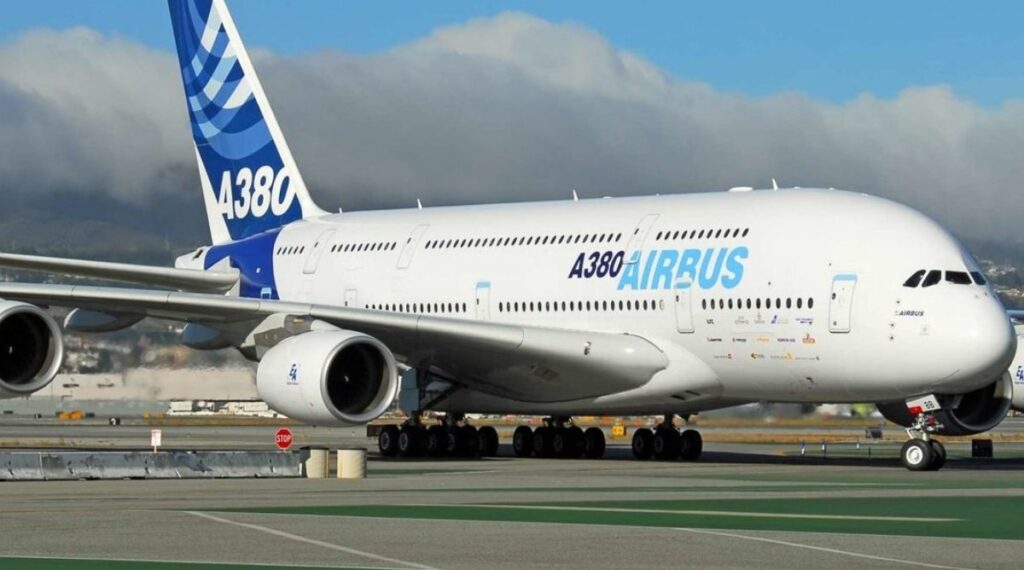
Imagine this massive wingspan extending almost the length of a football field, designed to support nearly 600,000 pounds during takeoff; a feat of engineering that feels almost surreal.
The fuel capacity of an A380 is so vast that it could fill three average-sized swimming pools. This staggering amount of fuel not only powers the aircraft on long-haul flights but also highlights just how significant a 300-foot measurement truly is.
The USS Enterprise Aircraft Carrier’s Flight Deck Width
The flight deck of the USS Enterprise, a Nimitz-class aircraft carrier, stretches an impressive 300 feet in width, making it a marvel of engineering and design. The 300-foot width allows for simultaneous operations of multiple planes, enhancing efficiency and safety during critical missions.
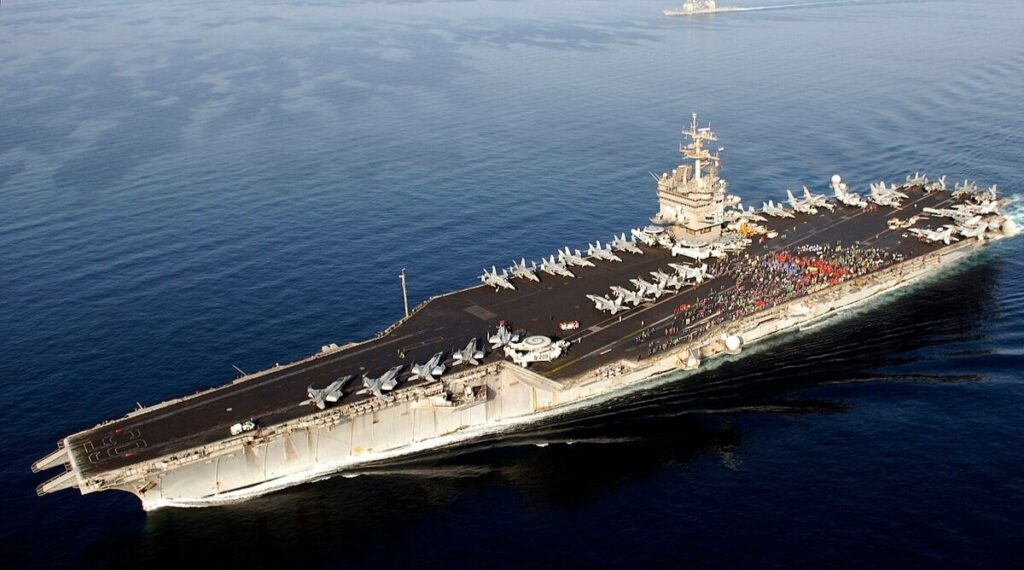
When you ask, “how big is 300 feet,” imagine it as a bustling airport runway floating on water, where every inch is optimized for high-speed takeoffs and landings.
The flight deck serves as a bustling hub where fighter jets, helicopters, and support vehicles converge in a synchronized dance, often under the pressure of tight time constraints.
Half the Height of the Space Needle
Soaring to 605 feet, the Space Needle stands as an iconic symbol of Seattle’s skyline, captivating visitors with breathtaking views and a rich history. When you reach the 300-foot mark, you’re not just halfway up this architectural marvel; you’re enveloped in a panorama that redefines your perception of distance.
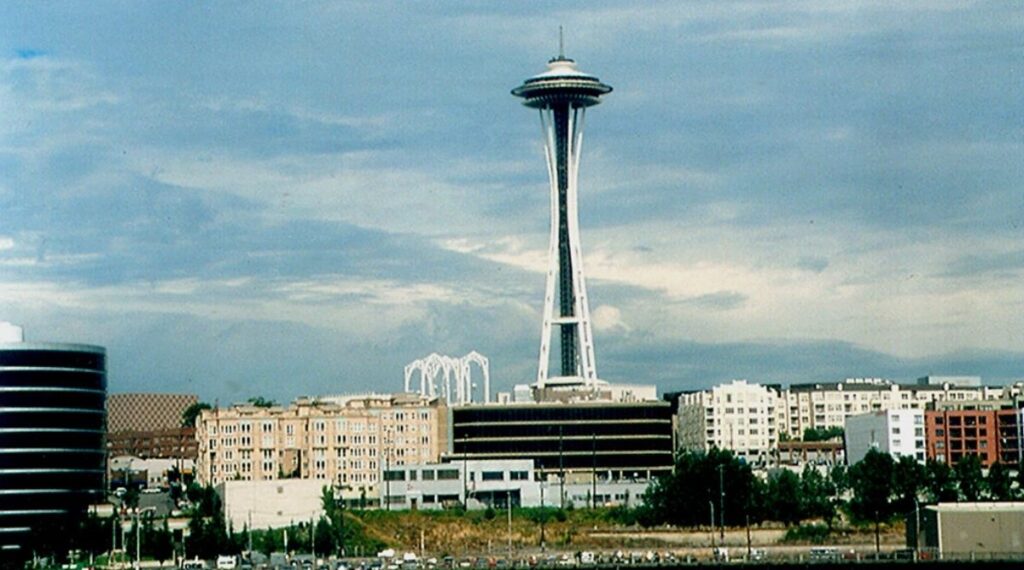
At this altitude, how far is 300 feet visually? From the observation deck, you can clearly see the lush greenery of the Emerald City, with its vibrant parks and bustling streets below, offering a unique perspective of urban life juxtaposed against nature.
Originally built for the 1962 World’s Fair, the Space Needle not only showcases engineering brilliance but also serves as a reminder of human ingenuity and vision.
The Height of Niagara Falls
Horseshoe Falls plunges 167 feet into the roaring waters below, while the American Falls reaches an impressive height of 176 feet. Together, they create a breathtaking spectacle that draws millions of visitors each year.

As you gaze down into the rapid-filled gorge, the combined vertical drop approaches a staggering 300 feet, a height that evokes comparisons to iconic structures like the Statue of Liberty or a 30-story building.
But what does 300 feet look like? Imagine the vertical drop of a 30-story building, with water tumbling over the precipice at a rate of approximately 750,000 gallons per second, creating a thunderous roar that can be heard from miles away.
The experience is not merely visual; it’s visceral, stirring deep emotions and a sense of connection to the planet’s untamed beauty.
Big Ben
Standing proudly at 316 feet, the Elizabeth Tower; better known as Big Ben, commands attention not just for its size but for its intricate Gothic Revival architecture that captures the imagination of millions.

To give you a sense of scale, the 300-foot mark would place you just below the belfry, where the massive 13.7-ton Great Bell resides. This colossal bell, with a diameter of 23 feet, has been the heartbeat of London since it first rang out in 1859, marking the passage of time and significant events in British history.
The recent restoration work completed in 2022 has breathed new life into this iconic structure, ensuring that Big Ben remains a symbol of resilience and beauty amid the ever-evolving urban landscape.
As you gaze up at the clock tower, you can’t help but marvel at how it stands tall among other remarkable structures; think of things that are 300 feet long, such as a football field or a city block, and yet, it embodies a character and history all its own.
The Gateway Arch Width
At its base, the Gateway Arch spans an impressive 300 feet, a distance that can be hard to visualize without context. Imagine standing at the edge of a football field; the width of the Arch is nearly as expansive as the entire length of the field, creating a striking contrast against the towering height of 630 feet that rises above it.

Completed in 1965, the Arch isn’t merely a symbol of St. Louis; it’s a masterclass in design that deftly balances aesthetics and functionality.
The catenary curve, reminiscent of the natural shape formed by a hanging chain, ensures that the structure can withstand fierce winds while maintaining its elegant silhouette.
Standing beneath the Arch, one can truly grasp how 300 feet visually anchors such a monumental structure, grounding it firmly in both history and modern architectural prowess.
Understanding Scale in Modern Context
In the modern context, 300 feet can serve as a striking reference point for understanding scale, particularly in urban planning and architecture.
For instance, consider how this measurement translates into visual landmarks: a 30-story building typically reaches about 300 feet. This height not only defines city skylines but also shapes the human experience of space.
In an age where aerial perspectives are becoming increasingly prevalent, recognizing the significance of 300 feet helps us appreciate the intersection of human activity, technology, and the vertical dimensions of our cities.
Practical Applications in Today’s World
In today’s cities, 300 feet is a key measure of convenience. City planners and architects use this distance to design walkable neighborhoods, ensuring grocery stores, parks, and public transport are close by.

In aviation, 300 feet is vital for safety during takeoff and landing. Pilots must perform specific checks at this height to protect passengers. As technology and cities evolve, the importance of 300 feet shapes city planning and air traffic control.
Visualizing 300 Feet in Daily Life
Standing 300 feet from a football field alters our perception of space, enhancing experiences in parks. A brisk walk of 300 feet provides a mental reset, emphasizing the importance of small distances.
Visualizing this length encourages mindfulness and appreciation for often-overlooked surroundings, reminding us that even minor spaces can influence our experiences and interactions with the environment.
Conclusion
Grasping the concept how long is 300 feet? allows us to better relate to the world around us, as it often represents significant distances in both nature and human-made structures. This length is not just an abstract figure; it connects us to familiar sights like city blocks, sports fields, and even the span of an aircraft.
Recognizing what 300 feet looks like in real life can enrich our understanding of space and scale. It encourages us to explore our environment with a newfound appreciation for distance and dimensions.
FAQs
How Tall is 300 Feet in Stories?
The height of a building in stories can vary depending on the design and purpose of the structure, but a common approximation is that one story is about 10 to 12 feet tall. Using this estimate, 300 feet would generally equate to around 25 to 30 stories.
What is 300 Feet Equivalent to?
300 feet is equivalent to approximately 91.44 meters. This conversion is based on the fact that one foot equals 0.3048 meters. To convert feet to meters, you can multiply the number of feet by this conversion factor. In this case, 300 feet multiplied by 0.3048 gives you 91.44 meters, making it a straightforward calculation.
How Many Flights of Stairs is 300 Feet?
To estimate how many cars fit into 300 feet, we can use the average length of a car, which is typically around 15 feet. Using 15 feet as a standard gives us a reasonable estimate of about 20 car lengths for 300 feet.
How Far is 300 Feet in Miles to Walk?
To convert feet to miles, you can use the fact that there are 5,280 feet in a mile. So, when you divide 300 feet by 5,280 feet per mile, you get approximately 0.057 miles. This means that walking 300 feet is just a small fraction of a mile.







